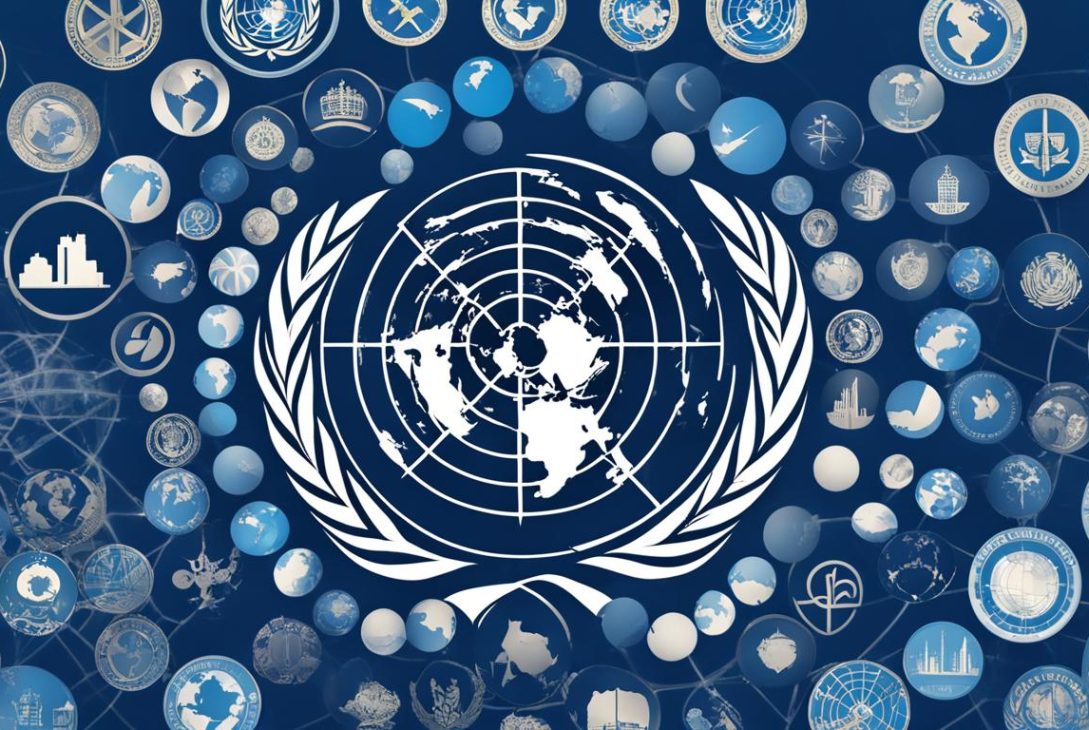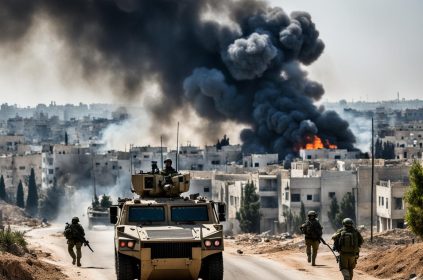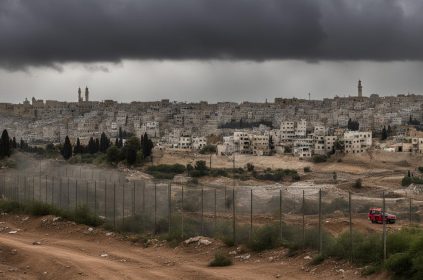United Nations Security Council resolutions play a crucial role in international law, peacekeeping, conflict resolution, and global security. These resolutions are the formal expressions of opinion or will issued by UN organs, particularly the Security Council. They address various issues, including the imposition of UN sanctions, international diplomacy, and the authorization of UN peace operations.
Since 1946, Security Council resolutions have provided a framework for resolving disputes and promoting international cooperation. Understanding the process of resolution creation and the role of these resolutions is vital for comprehending the efforts made by the international community to maintain and restore international peace and security.
In this article, we will delve into the intricacies of United Nations Security Council resolutions, exploring their creation, structure, and impact on global affairs.
Key Takeaways:
- United Nations Security Council resolutions are formal expressions of opinion or will issued by UN organs.
- These resolutions address various issues, including international law, peacekeeping, conflict resolution, global security, UN sanctions, international diplomacy, and UN peace operations.
- Understanding the process of resolution creation and the role of these resolutions is crucial for comprehending efforts to maintain and restore international peace and security.
- Resolutions are binding upon all UN member nations and carry significant weight in shaping global peace and security.
- The veto rule, where a single permanent member’s vote can prevent the adoption of a resolution, plays a crucial role in the Security Council’s decision-making process.
Understanding UN Resolutions
UN resolutions play a crucial role in international diplomacy and the pursuit of global peace and security. These resolutions are formal expressions of the opinion or will of various UN organs, including the Security Council, General Assembly, Economic and Social Council, and Human Rights Council. Resolutions are individual documents issued by each organ, with the Security Council being a primary issuer of resolutions.
Resolutions typically consist of a preamble and an operative part, with the operative paragraphs beginning with verbs in the present tense. They address a wide range of issues, such as conflict resolution, peacekeeping operations, and the imposition of UN sanctions. The Security Council resolutions carry particular significance, as they are binding upon all UN member nations.
It is important to distinguish resolutions from decisions. Resolutions address substantive matters and require affirmative votes for adoption, whereas decisions often concern procedural issues and represent the consensus of the members. Both resolutions and decisions are compiled and published as part of the Official Records of the respective organs.
To gain a better understanding of UN resolutions, it is useful to examine the roles of different UN organs, their decision-making processes, and the impact these resolutions have on global peace and security.
The Role of UN Organs in Issuing Resolutions
The United Nations consists of several organs that contribute to the creation and issuance of resolutions. The Security Council, composed of fifteen member states, is primarily responsible for maintaining international peace and security. It is empowered to issue binding resolutions that member nations are required to comply with.
The General Assembly, consisting of all UN member nations, also has the authority to issue resolutions. However, unlike the Security Council, General Assembly resolutions are non-binding and serve as recommendations. The General Assembly addresses a wide range of global issues, including economic development, human rights, and international law.
The Economic and Social Council (ECOSOC) and the Human Rights Council are two other important UN organs that issue resolutions. ECOSOC focuses on economic and social issues, while the Human Rights Council is dedicated to promoting and protecting human rights globally. These resolutions contribute to the overall efforts of the UN in addressing key challenges and advancing its goals.
| UN Organ | Type of Resolutions |
|---|---|
| Security Council | Binding resolutions |
| General Assembly | Non-binding resolutions |
| Economic and Social Council (ECOSOC) | Resolutions on economic and social issues |
| Human Rights Council | Resolutions on human rights |
“UN resolutions are a significant tool for the international community to address global challenges and promote cooperation among member nations. They provide a framework for action and decision-making, shaping the trajectory of international relations and conflict resolution.” – UN Diplomat
By understanding the role of UN organs and the nature of resolutions they issue, we can gain valuable insight into the complex dynamics of international diplomacy and the collective pursuit of global peace and security.
The Process of Resolution Creation
Resolution creation in the United Nations Security Council involves a series of steps and consultations aimed at addressing complaints regarding threats to peace or breaches of peace. When such a complaint is brought before the Security Council, the President of the Council or any member state can initiate a resolution. This process is known as consultation, where draft resolutions are often submitted by the three permanent members of the Security Council – France, the United Kingdom, and the United States.
Consultations take place within various groups, including the permanent five (P5) group and other smaller groups within the Council. These consultations are crucial in shaping the content and wording of the resolution. However, if one of the permanent members of the Security Council casts a veto against a resolution, it cannot be passed, highlighting the significant influence that individual member states have in the decision-making process.
The resolution creation process is a complex and delicate one, requiring careful consideration and negotiation among the Security Council members. It is through this process that resolutions are formulated and ultimately adopted to address and resolve pressing international issues.
| Key Steps in the Resolution Creation Process | Description |
|---|---|
| Complaint or Threat to Peace | A complaint concerning a threat to peace or breach of peace triggers the resolution creation process. |
| Initiation of Resolution | The President of the Council or any member state can initiate a resolution in response to the complaint. |
| Consultation | Consultations take place within the P5 group and other groups within the Council to discuss and draft resolutions. |
| Veto Rule | If one of the permanent members casts a veto against a resolution, it cannot be passed. |
Table: Key Steps in the Resolution Creation Process
Preparatory Work for Resolutions
The three permanent members of the Security Council (P3) play a crucial role in the preparatory work for resolutions. Their UN Ambassadors or representatives engage in daily meetings to discuss the issues on the Council agenda and collaborate on the formulation of draft resolutions. This collaborative effort ensures that the resolutions reflect the interests and positions of the P3 members.
Following the P3 consultations, the draft resolutions undergo further discussions and negotiations within the permanent five (P5) group, which includes China and Russia in addition to the P3. These consultations aim to broaden support for the resolutions and gather input from the other members of the Security Council. The goal is to ensure that the resolutions garner sufficient support to be adopted.
Informal consultations, where working papers and draft resolutions are finalized, take place in the Council’s dedicated consultation chamber. This informal setting allows for open and frank discussions among the Council members. Once the resolutions are considered ready, the Council convenes in a formal session to officially open the meeting and proceed with the adoption process.
| Preparatory Work Process | Key Participants |
|---|---|
| P3 consultations | UN Ambassadors/Representatives of the permanent members: France, the United Kingdom, and the United States |
| P5 consultations | UN Ambassadors/Representatives of the permanent members (P3) and China and Russia |
| Informal consultations | All members of the Security Council |
| Formal session | All members of the Security Council |
The preparatory work for resolutions involves extensive collaboration and negotiation among the permanent members of the Security Council. The input and support of various Council members are crucial to ensuring the successful adoption of resolutions.
Closed Informal Meetings
Security Council members often engage in closed informal meetings held at the United Nations Headquarters in New York. These meetings provide an opportunity for the members to consult their national groups in the General Assembly. Closed informal meetings occur in the consultation chamber, where the travaux préparatoires of the Council, including working papers and draft resolutions, are completed.
During these closed informal meetings, Security Council members engage in in-depth discussions and negotiations. The meetings are off the record and completely closed to nonmembers, allowing for frank and confidential conversations. This setting enables the members to share their perspectives, exchange ideas, and work towards consensus on important issues.
The closed informal meetings play a crucial role in shaping the Security Council’s decisions and resolutions. It is during these meetings that the most important decisions are made, serving as a critical step in the resolution creation process. By allowing for private and focused discussions, the closed informal meetings contribute to the effectiveness and efficiency of the Security Council’s work.
| Benefits of Closed Informal Meetings | Key Aspects |
|---|---|
| Facilitates open and honest discussions | Confidentiality |
| Promotes exchange of ideas and perspectives | Nonmember exclusion |
| Allows for in-depth negotiations | Working papers and draft resolutions |
| Fosters consensus-building | Decision-making process |
The closed informal meetings, with their focus on confidentiality and inclusivity, provide an essential space for Security Council members to engage in productive dialogue, address challenges, and seek common ground. Through these meetings, the Council can effectively carry out its mandate of maintaining international peace and security.
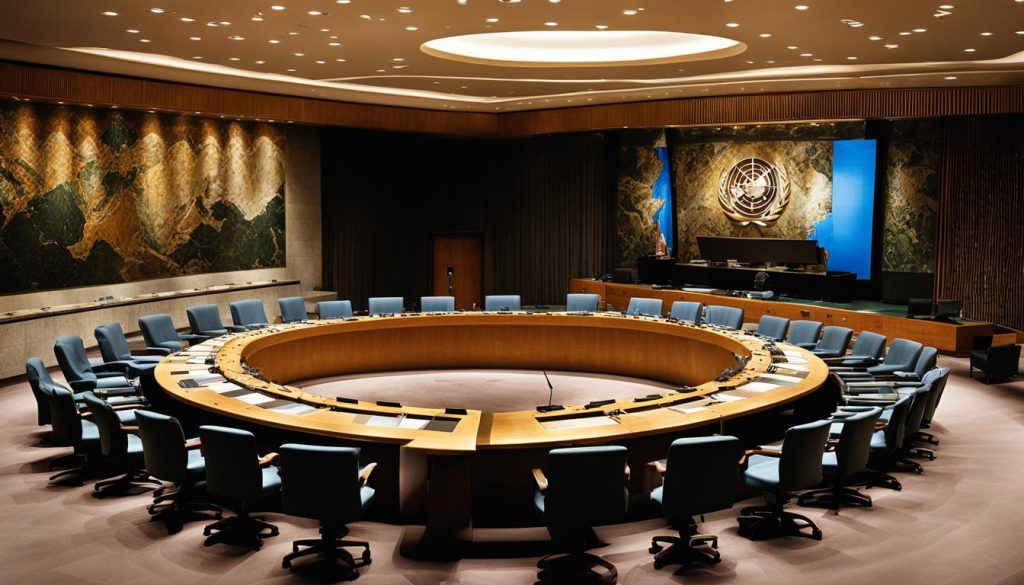
Official Formal Meetings
Official meetings of the Security Council are important gatherings where crucial decisions are made. These meetings are often characterized by short debates and a straightforward voting procedure. Unlike the lengthy debates that can occur in other forums, the Council’s official meetings focus on immediate action and problem-solving.
During these meetings, representatives of UN member nations have the opportunity to make statements, expressing their views on the issues at hand. This allows for the exchange of ideas and perspectives, contributing to a more comprehensive understanding of the situation. The statements made during these meetings serve as valuable input for the decision-making process.
Resolutions passed by the Security Council during these official meetings carry significant weight as they are binding upon all UN member nations. The Council’s resolutions require nine affirmative votes, including those of the permanent members, to be passed. This rule, known as the veto, ensures that all resolutions have broad support and consensus among the global community.
By convening official formal meetings, the Security Council upholds its responsibility to maintain and restore international peace and security. These meetings provide a platform for member nations to collectively address global challenges, make crucial decisions, and take coordinated action towards a more peaceful and secure world.
The Role of UN Resolutions
UN resolutions play a significant role in promoting global peace, security, and conflict resolution. They serve as powerful tools of international diplomacy, allowing the United Nations to address pressing issues affecting the international community. Through resolutions, the Security Council takes action to maintain and restore international peace and security, providing a framework for resolving disputes and promoting international cooperation.
One key aspect of UN resolutions is their ability to implement and enforce UN sanctions. In cases where diplomatic efforts have failed to resolve conflicts, the Security Council can impose sanctions on countries or entities involved, restricting their access to resources and imposing travel bans. These sanctions are aimed at coercing parties to comply with international norms and work towards peaceful resolutions.
Additionally, UN resolutions authorize and provide guidance for peacekeeping operations. These operations involve the deployment of UN forces to conflict zones, with the aim of facilitating peace, protecting civilians, and supporting the implementation of peace agreements. The Security Council’s resolutions provide the legal basis and mandate for these peacekeeping missions, outlining their objectives, rules of engagement, and coordination mechanisms.
Key Role of UN Resolutions
- Promoting global peace and security
- Addressing conflicts and facilitating conflict resolution
- Enforcing UN sanctions to discourage noncompliance
- Authorizing and guiding UN peacekeeping operations
- Serving as a framework for international cooperation
“UN resolutions are essential tools in maintaining global peace and security. They provide a platform for the international community to collectively address conflicts, promote dialogue, and work towards sustainable solutions.”
In summary, UN resolutions are vital instruments for promoting global peace, security, and conflict resolution. They empower the United Nations to take decisive action, enforce sanctions, and authorize peacekeeping operations. Through resolutions, the international community collaborates in addressing conflicts, fostering dialogue, and building a more peaceful world.
Resolutions vs. Decisions
When it comes to UN bodies taking formal actions, resolutions and decisions play distinct roles. Resolutions predominantly address substantive issues and require affirmative votes for adoption, while decisions primarily concern procedural matters and reflect the consensus of the members. These actions are compiled and published as part of the Official Records of the organ they belong to.
Resolutions tackle substantive matters, such as conflict resolution, international diplomacy, UN sanctions, and peacekeeping operations. They carry significant weight and are binding upon all UN member nations. On the other hand, decisions focus on procedural aspects and record the adoption of a text representing the consensus of the members.
In the UN system, resolutions carry more weight than decisions as they address substantive issues, while decisions primarily deal with procedural matters.
Resolutions and decisions of the principal organs, such as the Security Council, are compiled and included in the Official Records of the respective organ. Subsidiary bodies’ resolutions and decisions are published in the report submitted to their parent organ. This system ensures that these formal actions are documented and available for reference and analysis.
| Resolutions | Decisions |
|---|---|
| Address substantive issues | Concern procedural matters |
| Require affirmative votes | Reflect the consensus of the members |
| Binding on all UN member nations | Record adoption of a text |
| Published in the Official Records | Included in reports to the parent organ |
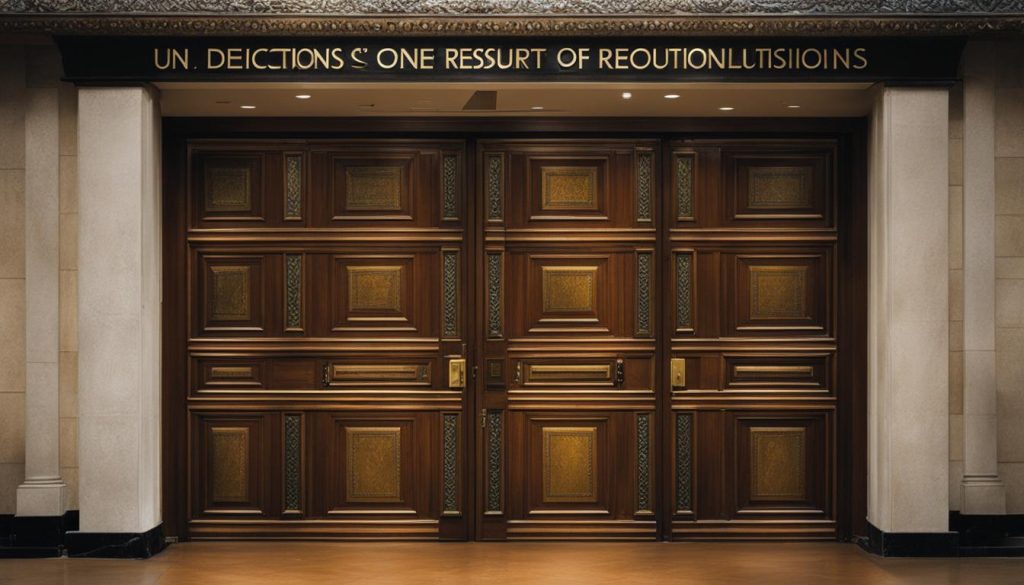
In summary, resolutions and decisions play different roles within UN bodies. Resolutions address substantive issues and carry more weight as they require affirmative votes and are binding on all UN member nations. Conversely, decisions focus on procedural matters and record the consensus of the members. Both types of formal actions are compiled and published as part of the Official Records or reports, ensuring accessibility and transparency.
Key Features of Historical Resolutions
The United Nations Security Council issued resolutions in two different formats during the early years of its existence. From 1946 to 1964, resolutions were documented as S/– documents. However, in 1965, retrospective resolution numbers were assigned to these previously adopted resolutions, starting with S/RES/1 (1946) and ending with S/RES/199 (1964). The original document symbols can still be referenced for resolutions adopted within this period.
Annual compilations were also published for the years 1946 to 1964 in the S/INF/- series. These compilations included a consolidated check list that provided both the original document symbols and the retrospectively assigned resolution numbers. This allowed for easier reference and access to the historical resolutions issued during this time.
To understand the context and significance of historical resolutions, it is important to consider their original format, the retrospective assignment of resolution numbers, and the availability of annual compilations. These key features help researchers and historians trace the development of UN Security Council actions and analyze their impact on global peace and security.
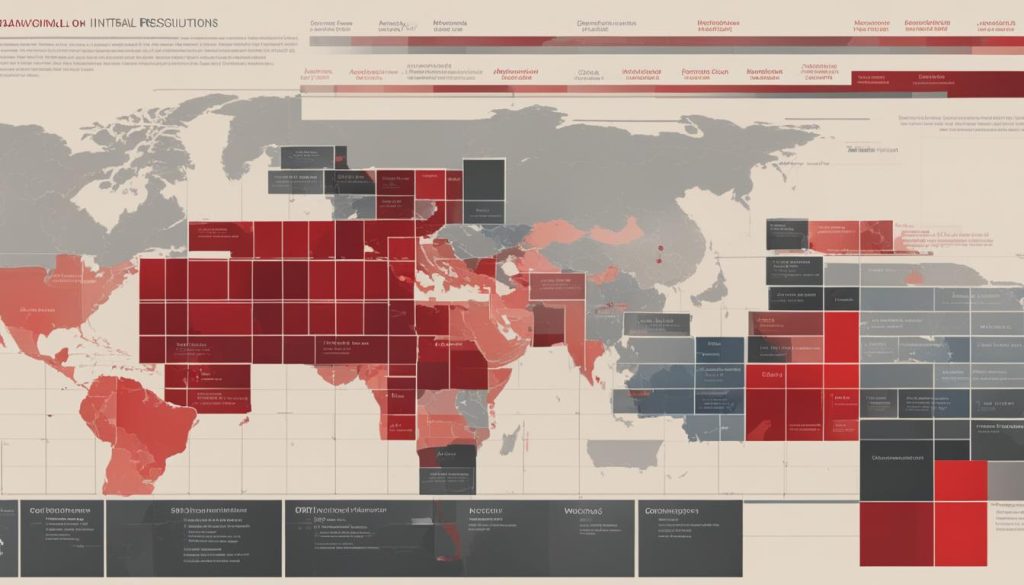
Table: Key Features of Historical Resolutions
| Feature | Description |
|---|---|
| S/– Documents | Format used for Security Council resolutions from 1946 to 1964. |
| S/RES/ Numbering | Retrospective assignment of resolution numbers to previously adopted resolutions, starting from S/RES/1 (1946) to S/RES/199 (1964). |
| Annual Compilations | Publication of yearly compilations in the S/INF/- series, including a consolidated check list of original document symbols and retrospectively assigned resolution numbers. |
| Original Document Symbol | Reference code for resolutions issued during the period of S/– documents. |
Conclusion
United Nations Security Council resolutions play a critical role in international law, peacekeeping, conflict resolution, and global security. As formal expressions of the opinion or will of UN organs, these resolutions carry significant weight in shaping global peace and security. Through a rigorous process of consultation and formal meetings, the Security Council addresses threats to peace and takes decisive action to maintain and restore international stability.
Resolutions issued by the Security Council are binding upon all UN member nations, underscoring their importance in the realm of international diplomacy. The veto rule, where one negative vote from a permanent member can prevent the adoption of a resolution, serves as a pivotal factor in the decision-making process. The creation of resolutions is a meticulous process, involving consultation within the permanent five group and other groups within the Council, ensuring broad support and consideration of diverse perspectives.
In summary, United Nations Security Council resolutions provide a framework for resolving disputes, promoting international cooperation, and implementing measures such as UN sanctions and peacekeeping operations. These resolutions help maintain and restore international peace and security, reflecting the collective will of the international community to address global challenges and conflicts. The impact of these resolutions extends far beyond diplomatic circles, as they shape the course of international relations and foster a more secure and peaceful world.
FAQ
What are United Nations Security Council resolutions?
United Nations Security Council resolutions are formal expressions of the opinion or will of UN organs. They address various issues such as conflict resolution, international diplomacy, UN sanctions, and peacekeeping operations.
Which UN organs issue resolutions?
The Security Council, General Assembly, Economic and Social Council, and Human Rights Council issue resolutions as individual documents.
What is the process of resolution creation?
When a complaint concerning a threat to peace or breach of peace is brought before the Security Council, the President of the Council or any member state may initiate a resolution. The process leading to a resolution is called consultation.
Who submits draft resolutions?
Draft resolutions are often submitted by the three permanent members of the Security Council: France, the United Kingdom, and the United States.
What happens during closed informal meetings?
Closed informal meetings are held to consult national groups in the General Assembly and complete preparatory work for resolutions. These meetings are closed to nonmembers and off the record.
How are resolutions adopted?
Resolutions passed by the Security Council require nine affirmative votes, including those of the permanent members, to be adopted. This rule is known as the veto, where if one of the permanent members votes against a resolution, it cannot be adopted.
What is the role of UN resolutions?
UN resolutions play a significant role in shaping global peace and security. They provide a framework for resolving disputes, promoting international cooperation, and taking action to maintain and restore international peace and security.
What is the difference between resolutions and decisions?
Resolutions address substantive issues and require affirmative votes for adoption, while decisions often concern procedural matters and represent the consensus of the members.
How were historical resolutions documented?
From 1946-1964, Security Council resolutions were issued as S/– documents. In 1965, resolution numbers were retrospectively assigned to previously adopted resolutions. Annual compilations were also issued for these years.
Are Security Council resolutions binding?
Yes, resolutions passed by the Security Council are binding upon all UN member nations.
Source Links
- https://research.un.org/en/docs/resolutions
- https://research.un.org/en/docs/sc/resolutions
- https://www.dagdok.org/un-system/security-council/resolutions-and-vetod/
conflict between israel and hamas gaza strip conflict hamas aggression israeli-palestinian conflict middle east conflict political unrest in palestine UN Security Council
Last modified: January 17, 2024


